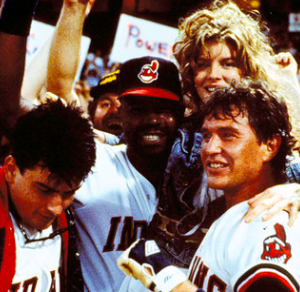Thirty years ago this month, the movie “Major League” opened in theaters nationwide, becoming a wild success overnight. It tells the story of a greedy Cleveland Indians team owner who sabotages her team’s success so she can use an escape clause in her stadium lease. A new stadium deal awaits in Miami, but her anti-social ballplayers band together to win anyway, saving baseball in Cleveland.
Using stadium politics as the motivating cinematic conflict was ahead of its time. Public spending on professional sports teams and their stadiums has only grown since the release of “Major League.” American taxpayers now pay over $1 billion each year in stadium subsidies.
Baseball might be America’s pastime, but several recent citizen-led movements have challenged local politicians’ handouts to team owners. Grassroots groups in Seattle and Boise recently petitioned for a referendum to let voters decide on proposed baseball subsidies, while Austin voters will decide on soccer subsidies this fall.
Legislation being considered in Idaho’s statehouse would ensure that Boise voters are consulted for all future “urban renewal” subsidies. Atlanta taxpayers have filed suit over whether the property tax exemption for Mercedes-Benz Stadium, home of the NFL’s Falcons, violates the Georgia constitution.
Team owners know that 70 percent of Americans oppose subsidizing football stadiums. And since football is nearly four times more popular than baseball, a baseball team owner certainly doesn’t want ballpark funding in front of the voters.
But why should taxpayers oppose what many argue is a public investment in economic development?
First, providing handouts to professional sports teams creates tradeoffs. When a city forgoes tax revenue through a tax break, it must cut back on public services or raise taxes for everyone else to compensate.
In a rather extreme example, politicians redirected Detroit school funding to subsidize Little Caesar’s Arena, replacing it with state funding in an elaborate shell game. Given the difficulties that Detroit schools face, the responsible choice would have used the subsidy funds to end their teacher shortage.
Second, subsidizing a stadium usually doesn’t provide what politicians promise: economic growth. In multiple long-running academic studies, University of Maryland economist Dennis Coates has found that “a new sports facility has an extremely small (perhaps even negative) effect on overall economic activity and employment. No recent facility appears to have earned anything approaching a reasonable return on investment.”
Furthermore, most locals have a fixed amount of money to spend on entertainment. What they spend on games means less money flowing to nearby movie theaters, music venues and restaurants.
Taxpayers lose almost every time team owners lobby politicians for handouts. But unlike umpires, taxpayers can (and should) change the rules in the middle of the game.
One such change could require voter approval for all stadium subsidies, similar to the Idaho proposal. Another promising idea is for cities to agree to a legal compact against providing subsidies in the future, ending the backstabbing competition for sports teams.
Cities compete over teams because of league limits on the number of franchises. Removing owners’ option to jump ship for a subsidized stadium elsewhere could actually motivate leagues to expand into more markets, allowing many more cities to enjoy their own hometown teams.
“Major League” screenwriter David Ward grew up in Cleveland and says he wrote it because “I figured I would never see the Indians win anything unless I wrote a movie where they did.” But Cleveland did go on to a World Series appearance just six years later, and nearly stole the championship away from the Chicago Cubs a few years ago. Maybe we need Ward to pen a sequel where a scrappy group of taxpayers forces a team owner to pay for her own stadium.

